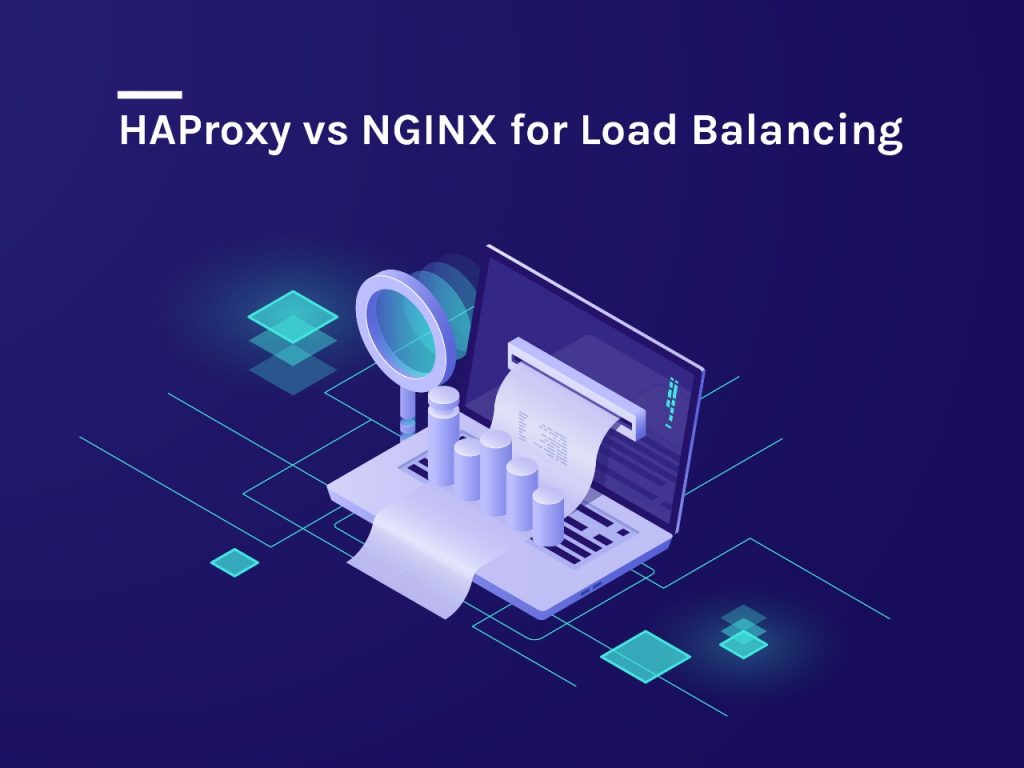
Let’s see what is best for load balancing, here you see HAProxy vs Nginx differentiation, and based on that you can choose the right one according to your requirement.
HAProxy
HAProxy
HAProxy is open-source software that serves as a load balancer and reverse proxy. Its commonly used to improve performance and distribute workloads. Their response times are reduced, and throughput is increased. It is especially used in high-traffic sites.
HAProxy was released in 2002 and the most recent long-term supported release is HAProxy 2.6. It is focused on simplifying some internals, completing the native HTTP client, and increasing stability. Also, HAProxy makes it easier to interact with third-party services.
A Few Key factors of HAProxy are:
- Better load balancing speed
- High performance
- Reverse Proxy
- Proxying for TCP and HTTP-based applications
During the implementation, the processes of rendering session persistence are impossible and it won’t share any storage which impacts the configuration settings for HAProxy. It is flexible when it comes to health checks and failover cases.
Exportable metrics are supported for integration with monitoring applications such as Datadog, Prometheus, and others.
NGINX
NGINX is open-source software that is used for web serving, reverse proxying, caching, and load balancing. It actually started as a web server planned for improved performance and delivering stability. Moreover, Nginx is one of the fastest web servers and the setup costs are cheaper than usual.
In October 2004, NGINX was released. It is simple to set up for serving static web content or acts as a proxy server.
A Few Key factors of NGINX are:
- Proxy server for email
- Reverse proxy
- HTTP server
- Load balancer
During the NGINX implementation, the processes will share memory. Some features have the ability to upgrade executables and configuration without losing client connections, as well as module-based approaches with support for both core and third-party modules. Caching is flexible.
Exportable metrics are not supported by NGINX (paid edition only).
NGINX for load balancing:
Nginx is a very efficient HTTP load balancer. It distributes traffic to several application servers and improves the performance, scalability, and reliability of web applications. If you already have Nginx and are looking for a simple load balancer, then you can go ahead and use NGINX as a reverse proxy as well, for its functionality, reliability, and scalability. Nginx as a web server is capable of many things hence if you need to implement some static content in the routing of the requests before terminating them on a third server then go for Nginx.
HAProxy for load balancing:
Offers high availability, monitoring, and full application delivery functionality. If your need is only for a load balance and a HA (any web server) then HAProxy is a good option. HAProxy’s status page is much more detailed & user-friendly as compared to Nginx’s. Nginx can do many things but when anything happens to configuration or setup it affects your load balancer, as Nginx doesn’t support PROXY Protocol.
When you need a stable load balancer focus on the one that with specific functions for a load balancer. Nginx acts as a load balancer, whereas HAProxy is a Load Balancer / Reverse Proxy. You cannot use HAProxy for other purposes as you can with Nginx, as Nginx can do much more than load balancing. Another interesting factor is that you can even try HAProxy together with Nginx, where you can take the advantage of both. Hope this differentiates HAProxy vs Nginx load balancing.
To get more updates you can follow us on Facebook, Twitter, LinkedIn
